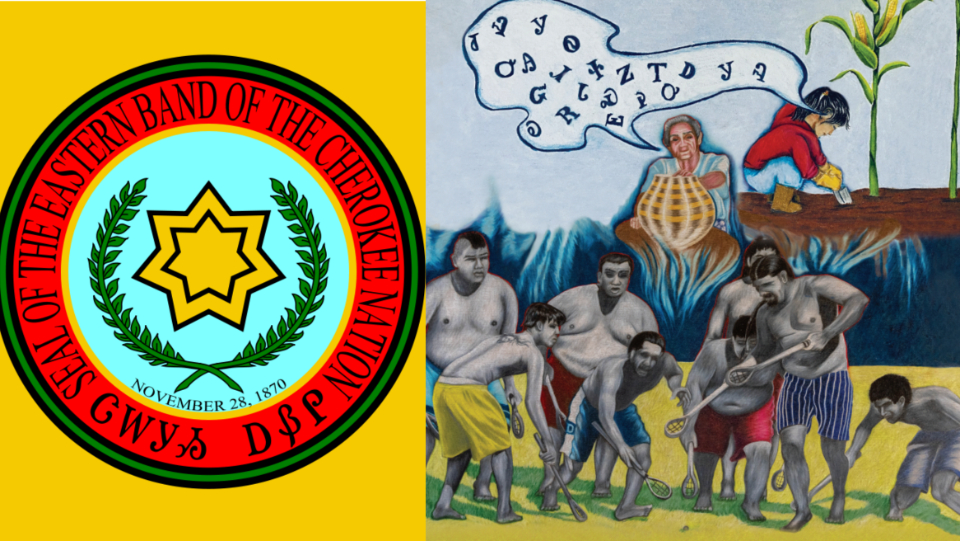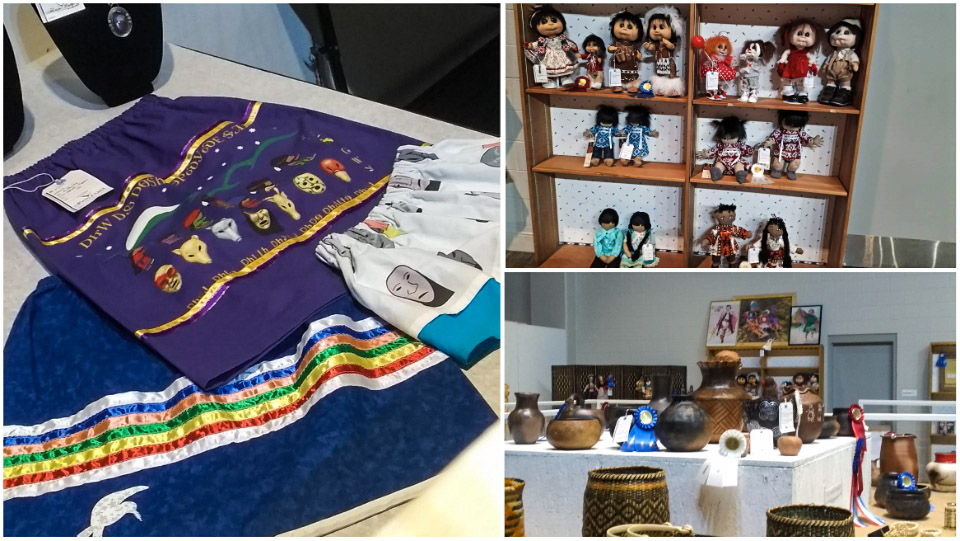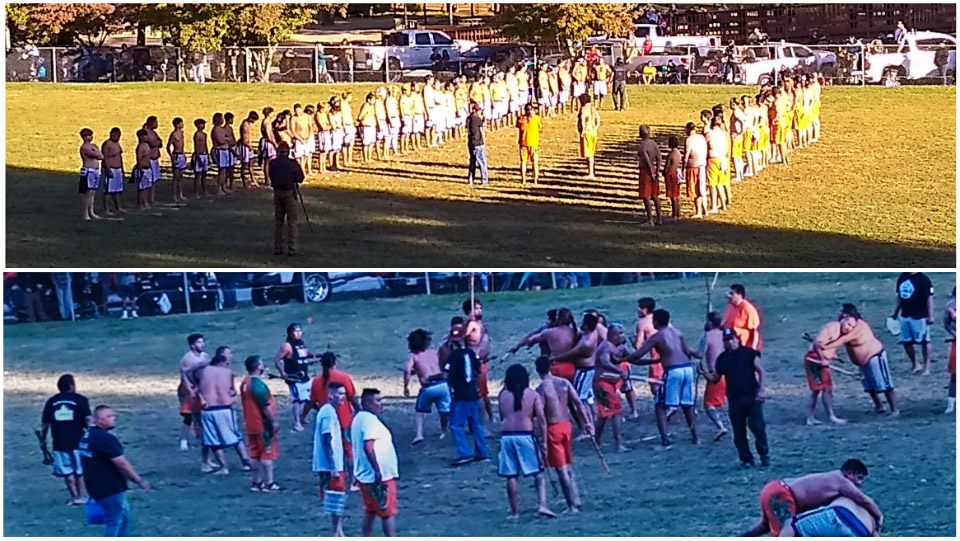Indianz.Com > News > People’s World: Cherokee Indian Fair returns after COVID-19 hiatus

Cherokee Indian Fair back after pandemic cancellations
Thursday, November 3, 2022
People's World
CHEROKEE, North Carolina — The Eastern Band of Cherokee Indians (EBCI) held its 110th Cherokee Indian Fair from October 4-8 after two years of cancellations due to the pandemic. In fact, at one point there was uncertainty as to when the fair would resume. Having attended the fair since I was a child, it was a joyous occasion to be back again.
A number of factors rendered this year’s gathering potentially problematic. First, there was a necessary change of location due to the amphitheater canopy at the Ceremonial Grounds developing structural problems, rendering it unsafe. Due to such problems many fair activities were moved to the Cherokee Convention Center, and fair rides were also relocated.
There were mixed sentiments about these changes among some Tribal members, but the changes were made with the safety of Cherokee citizens and all other attendees foremost in mind.
We hope you enjoy this video we put together from today's Cherokee Indian Fair Parade. 🙂
Posted by Cherokee One Feather on Tuesday, October 4, 2022
Brief history of the Cherokee Indian Fair
Before proceeding further with this year’s fair, a brief history of the week-long event is in order. In the summer of 1912, the Commissioner of Indian Affairs, Cato Sells, made a special trip to the reservation at Cherokee, N.C., from Washington, D.C. The purpose of his trip was to discuss with Cherokee leaders the possibility of organizing and promoting an Indian Fair. The objective was that the six townships on the reservation each organize a club that would develop into a Farmer’s Organization.
The Big Cove township proceeded under the direction of Cherokee traditionalist leader Will West Long and held a special meeting to elect a Fair Committee. The next decision to be made was where to hold the fair, either at Big Cove or Cherokee. It was decided that the location would be Cherokee, and the next decision made was on what to call the fair. “Cherokee Indian Fair” won out, and so it has been ever since.
The main purpose of the fair was to provide an opportunity for tribal members and the reservation communities to have a grand yearly get-together.

Today’s fair 2022
This year’s fair had as its theme “Hniwi Tsalagi – Say it in Cherokee.” The theme continued: “Every chance you get, speak Cherokee, no matter how much or how little you know. Come up with resources to learn phrases and words in our everyday lives.” This was an emphasis on the paramount importance of the sacredness of the Cherokee language as a necessary part of Cherokee identity and culture.
The fair is held in the town of Cherokee, which is the main administrative center for the reservation. It also showcases Cherokee culture with arts and crafts, including beadwork, wood and stone carving, pottery, painting, drawing, finger weaving, and doll making. It also comes complete with Miss Cherokee pageants, rides, and music by well-known bands.
The 2022 edition of the fair started with a week-long panoply of activities beginning on Tuesday, October 4, and continuing through Saturday, Oct. 8. Each day had a different focus. For example, Tuesday was Parade Day, Wednesday Children’s Day, Thursday Elder’s Day, Friday Veteran’s Day, and Saturday was Community Day. Different activities play out each day.
Highlights of the fair are traditional Cherokee food served at the food booths (one of my favorites is bean bread); the Exhibit Hall with the arts and crafts of the various townships; archery exhibitions for youth and adults; and blowgun demonstrations.
Cherokee Stickball: The Little Brother of War
The highlight for myself and family was, as always, Cherokee Stickball (Anetsa). A little background to the game is in order. It is the all-time favorite of the fair for just about everyone, and everyone has their favorite team.
The game has been described as a combination of boxing, wrestling, football, hockey, rugby, and soccer, which makes it the ultimate in being rough and tumble any way it is cut. There are six communities or townships on the reservation, and each has its own Stickball team. Stickball is still played at the fair by all ages including Youth Stickball, ages 6-9 and 10-12, Men’s Stickball, and Elders’ Stickball.
According to Cherokee oral tradition, the first whites to see the game, who were English, thought the players were actually fighting.
Stickball is an ancient game and a vibrant living tradition that has survived intact to the present-day. Most of the other southern nations play Stickball, and the game can differ somewhat from tribe to tribe. Stickball is a direct ancestor of lacrosse. The Stickball caller, or announcer, speaks in Cherokee and English. While some tribes use two Stickball racquets, Cherokees use only one.

Albert Bender is a Cherokee activist, historian, political columnist, and freelance reporter for Native and Non-Native publications. He is currently writing a legal treatise on Native American sovereignty and working on a book on the war crimes committed by the U.S. against the Maya people in the Guatemalan civil war He is a consulting attorney on Indigenous sovereignty, land restoration, and Indian Child Welfare Act (ICWA) issues and a former staff attorney with Legal Services of Eastern Oklahoma (LSEO) in Muskogee, Oklahoma.
This article originally appeared on People's World. It is published under a Creative Commons license.
Search
Filed Under
Tags
More Headlines
Chuck Hoskin: Cherokee Nation helps heal our communities
Native America Calling: Native skin cancer study prompts new concerns about risk
South Dakota Searchlight: Trump terminations hit Indian Arts and Crafts Board
Native America Calling: Regional improvement in suicide statistics is hopeful sign
List of Indian Country leases marked for termination by DOGE
‘Let’s get ’em all done’: Senate committee moves quickly on Indian Country legislation
AUDIO: Senate Committee on Indian Affairs Business Meeting to consider several bills
VIDEO: Senate Committee on Indian Affairs Business Meeting to consider several bills
Native America Calling: The ongoing push for MMIP action and awareness
‘Blindsided’: Indian Country takes another hit in government efficiency push
Native America Calling: A new wave of resistance against Trans Native relatives
Urban Indian health leaders attend President Trump’s first address to Congress
‘Mr. Secretary, Why are you silent?’: Interior Department cuts impact Indian Country
Cronkite News: Two Spirit Powwow brings community together for celebration
Native America Calling: Native shows and Native content to watch
More Headlines
Native America Calling: Native skin cancer study prompts new concerns about risk
South Dakota Searchlight: Trump terminations hit Indian Arts and Crafts Board
Native America Calling: Regional improvement in suicide statistics is hopeful sign
List of Indian Country leases marked for termination by DOGE
‘Let’s get ’em all done’: Senate committee moves quickly on Indian Country legislation
AUDIO: Senate Committee on Indian Affairs Business Meeting to consider several bills
VIDEO: Senate Committee on Indian Affairs Business Meeting to consider several bills
Native America Calling: The ongoing push for MMIP action and awareness
‘Blindsided’: Indian Country takes another hit in government efficiency push
Native America Calling: A new wave of resistance against Trans Native relatives
Urban Indian health leaders attend President Trump’s first address to Congress
‘Mr. Secretary, Why are you silent?’: Interior Department cuts impact Indian Country
Cronkite News: Two Spirit Powwow brings community together for celebration
Native America Calling: Native shows and Native content to watch
More Headlines